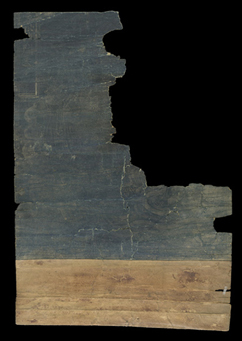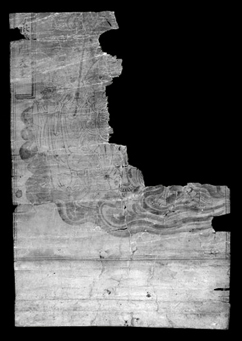Case Study 1: Or.8212/1938
This manuscript presents a painting with light colour pigments on a very dark blue background. Infrared imaging has brought out the detail of the sketching of the painting, transforming a 'barely there' image to one that can be easily identified.
 |
A beta radiograph (x-ray) has also been taken in the past to try to determine whether the pigments have metallic traces. The pigments however do not appear to be metallic in origin. The process for imaging in infrared is very simple. However the choice of filter and post-capture manipulation will determine just how successful the final image will be. |
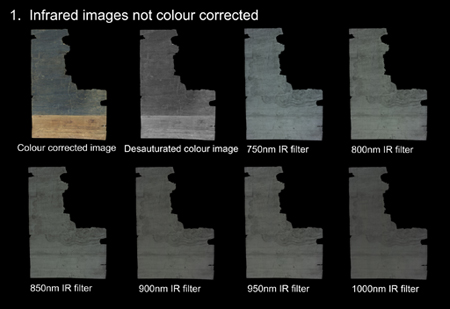 |
1. Starting with an unmanipulated image you can see the difference each filter has on the subject. The full colour image has been desaturated to show how the manuscript would appear if we had only captured in grey scale. |
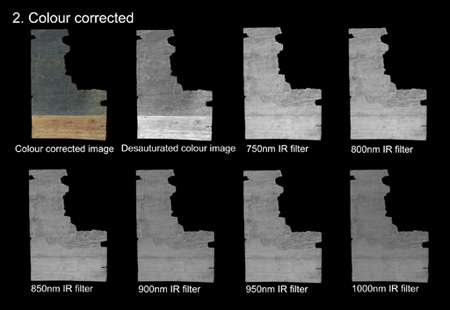 |
2. The images are then colour corrected to remove colour casts. Each channel of colour information can hold differing amounts of detail depending upon the subject, and these can be enhanced individually. In this case no further information has been apparent so the colour has been neutralised to a neutral grey |
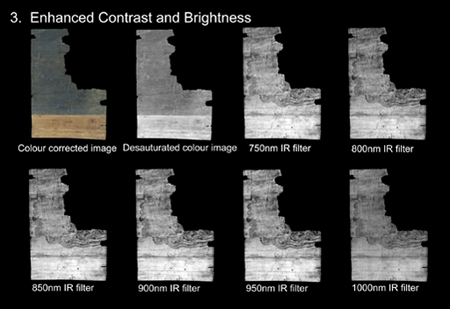 |
3. By enhancing the contrast and brightness of the image the detail become very strong, pointing us towards a final choice of image. For this manuscript the image produced with an 850nm filter was chosen as this was felt to have captured the most useful detail of the drawing. Note that the desaturated image has failed to yield more detail. Under normal working the choice of filter would be made from past experience and further images produced only if the original filter choice failed to produce results. |
| All images were captured using PhaseOne Powerphase FX+ digital scanning back mounted on DeVere 480 Vertical copy camera. Lighting is by Elinchrom tungsten modelling lights set to full power. Exposure specification as per chart. All images captured at 'High Resolution' (colour scale). | FILTER | SHUTTER SPEED | APERTURE | ASA | PIXEL DEPTH |
|---|---|---|---|---|---|
| 750nm | 40th/sec | f.11/16 | 400 | 16 bits/channel | |
| 800nm | 40th/sec | f.11/16 | 400 | 16 bits/channel | |
| 850nm | 30th/sec | f.11/16 | 400 | 16 bits/channel | |
| 900nm | 20th/sec | f.11/16 | 400 | 16 bits/channel | |
| 950nm | 15th/sec | f.11/16 | 400 | 16 bits/channel | |
| 1000nm | 8th/sec | f.11/16 | 400 | 16 bits/channel |
